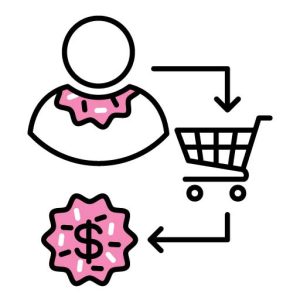The Paradox of Choice – Why More Is Less is a book written by American psychologist Barry Schwartz . paradox of choice focuses on the fact that more and more options are becoming easily available to us. The paradox of choice stipulates that while we might believe that being presented with multiple options actually makes it easier to choose one that we are happy with, and thus increases consumer satisfaction, having an abundance of options actually requires more effort to make a decision and can leave us feeling unsatisfied with our choice. If we only had to choose between few shirts on the shelf, it is easier to know which option we prefer, since we can easily weigh the pros and cons. When the number of choices increases, so does the difficulty of knowing what is best. Instead of increasing our freedom to have what we want, the paradox of choice suggests that having too many choices actually limits our freedom.
SOSO – Small Online Store Owners should plan their Product strategy based on this paradox
- Do not “attack” your customers with an overly rich and busy catalog
- Provide you customers with an option of Personal Customized Shelf
As the world of e-commerce grows, online store owners are constantly looking for ways to provide a more personalized shopping experience for their customers. One such tactic is to offer a customized personal shelf of products to each customer. This allows customers to easily access and track the products they are interested in purchasing, while also allowing online store owners to gather valuable data on their customers’ preferences and purchase behavior.
Here are some tactics that online store owners can use to offer a customer customized personal shelf of products.
- User registration and login:
The first step to offering a customized personal shelf is to ensure that customers have a user account on your website. This allows them to save their preferred products to their account and access them at a later time. By offering incentives such as discounts, free shipping or exclusive access to certain products or promotions, store owners can encourage customers to create an account.
- Product recommendations:
Once customers have created an account, online store owners can track their browsing and purchase history to offer personalized product recommendations. This not only helps customers find products they are likely to be interested in but also encourages repeat purchases. Product recommendations can be displayed on the customer’s personal shelf, as well as on the homepage and product pages.
- Personalized search:
Online store owners can also offer a personalized search function that takes into account a customer’s previous purchases and browsing history. This allows customers to easily find products they are interested in and helps online store owners better understand their customers’ preferences.
- Filters and sorting:
Filters and sorting options are another way to provide a more personalized shopping experience. Online store owners can allow customers to sort products by price, popularity etc.
5. Create micro Cluster data – based on users behavior in your store. collect data such as customer’s preferred products , customer’s price sensitivity, customer’s AOV ( Average Order Value ) , customer’s APF ( Average Purchase Frequency)
ComTov Audio :
